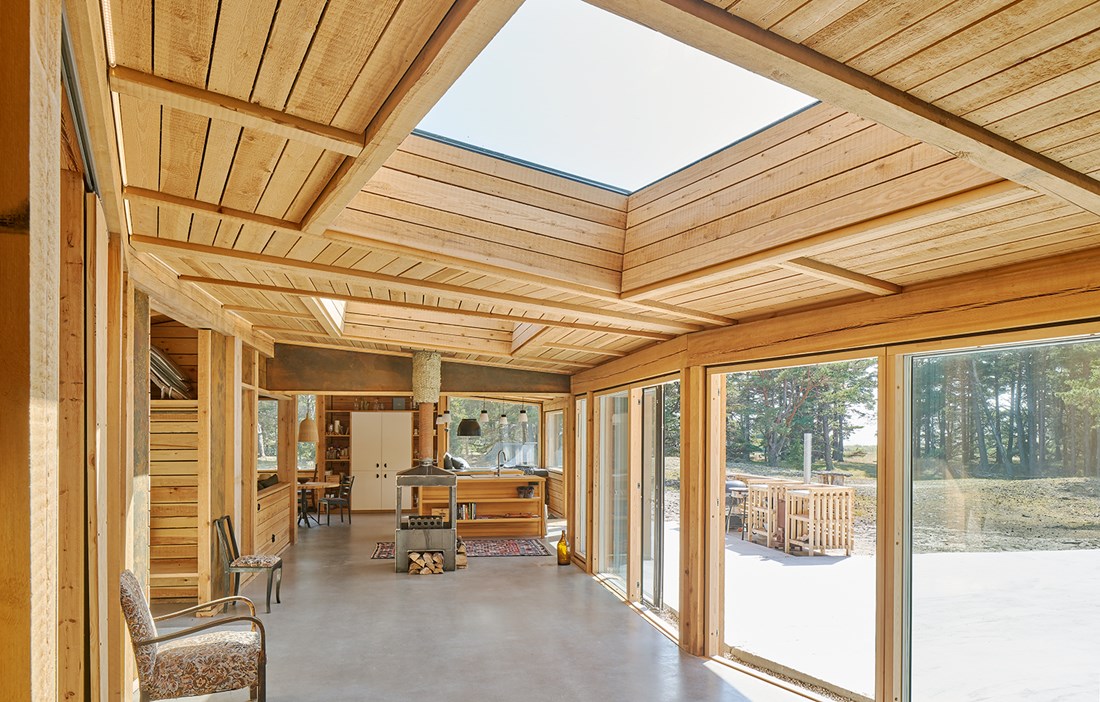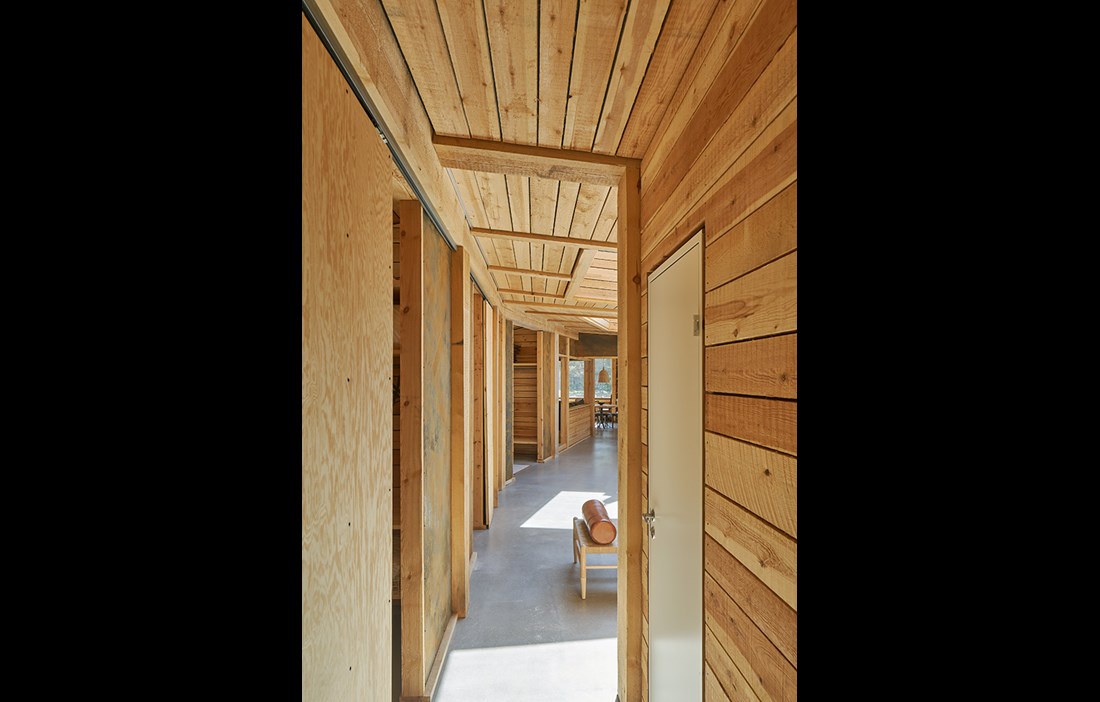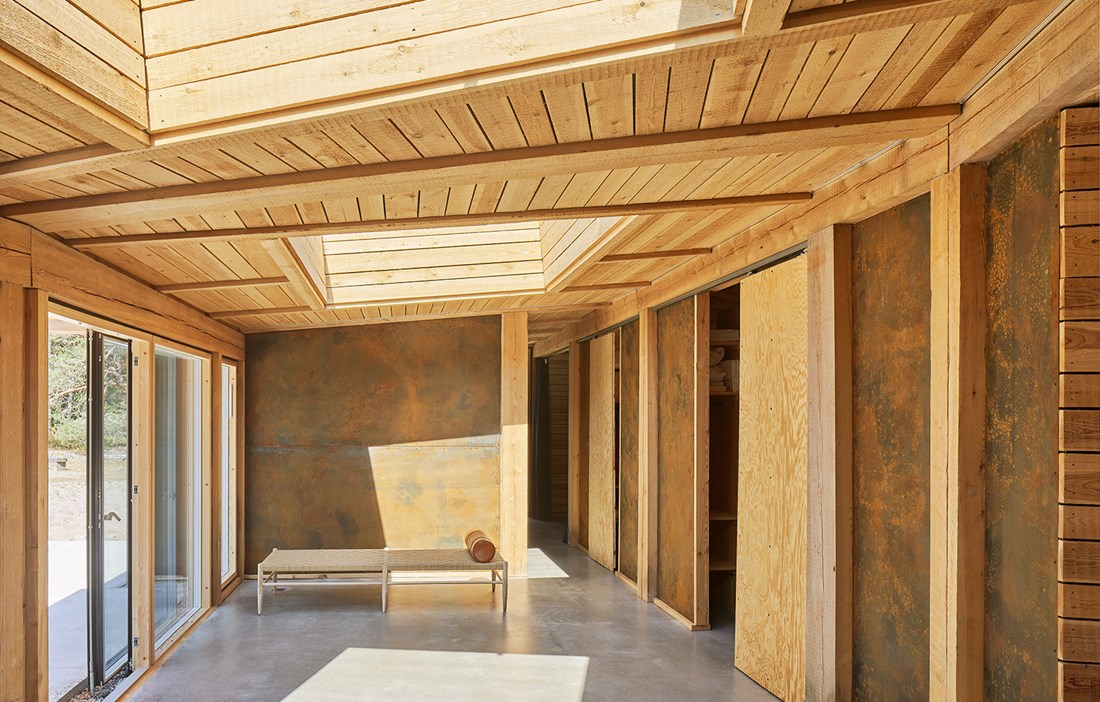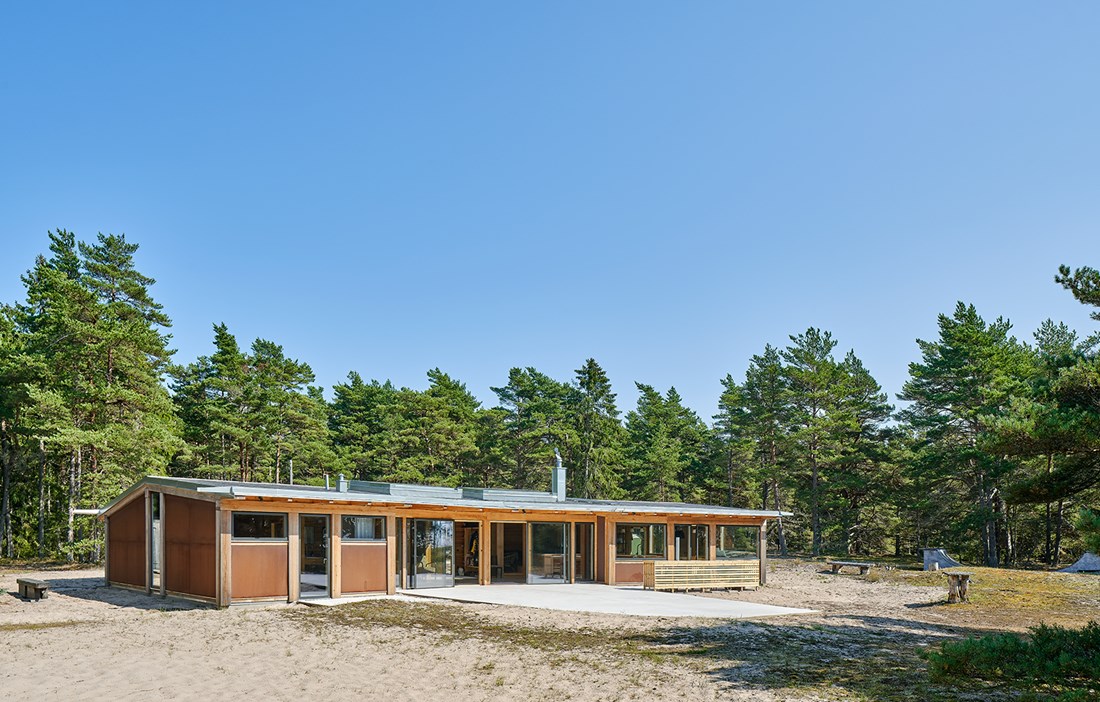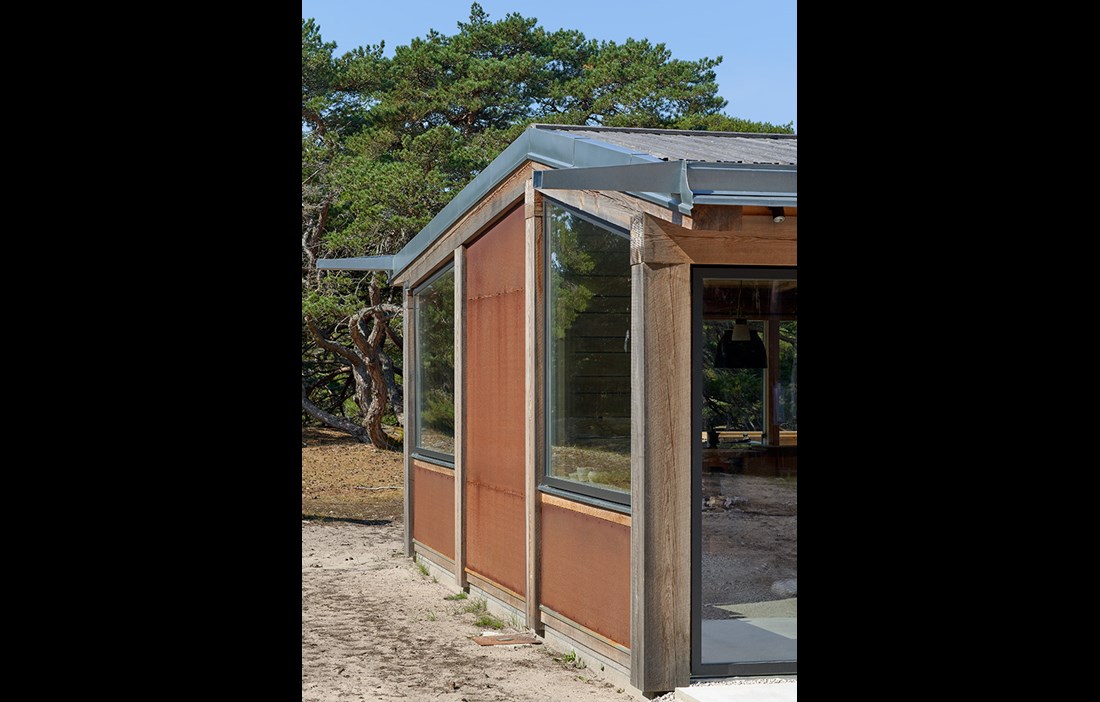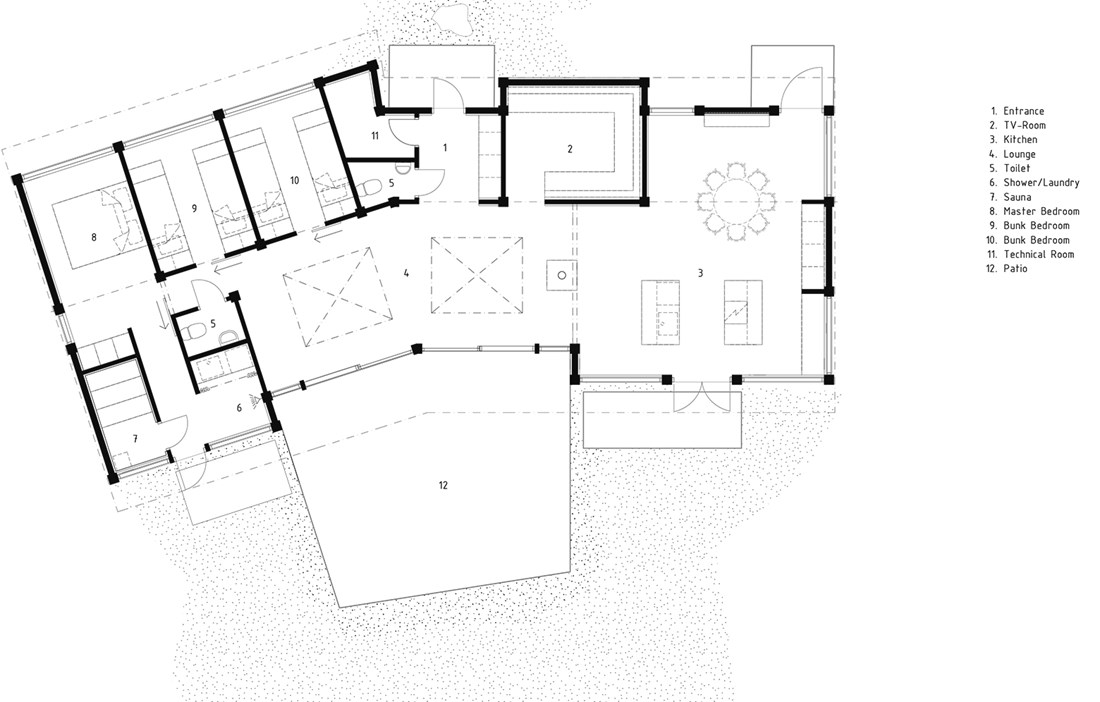The family who bought the little holiday home near the fishing village of Sjaustru began by living in it and thinking about what they wanted to do to the house. Architect Hans Murman produced several different sketches for them over a few years. Then one day, they made a decision and together with Murman Arkitekter they began developing the idea that had been bubbling away.
Since the client is a civil engineer and has worked in the construction industry for many years, they ended up working closely together
“It’s great to have a bold client who is keen to push the boundaries, without being irresponsible. We’ve been able to try several solutions involving different combinations of materials. Based on the program sketch, we drew a cross-section of the house in our conference room on a scale of 1:1, and the design grew out of that over a few weeks. We then created a 3D model, and as the potential began to emerge, we thought it could be cool to build the structural frame from real logs, a modern take on the island’s homes known as ‘bulhus’,” relates Hans Murman.
The classic Gotland bulhus is often compared with other post-and-plank designs, but here they use no diagonal stays, instead basing the house around a frame of hefty logs. In a traditional bulhus notches are cut out of the timbers to join them together, reducing the need for metal fixings. But in this modern variant, the structural engineers have used screws.
Sjaustru is a sensitive site, and the design of the new building required a dialogue with the County Administrative Board. A glazed veranda, flanked by the façades to protect against the often strong winds, was fine, but the building had to not dominate the landscape. A natural colour palette was therefore chosen, with the exterior comprising harmonised pine and corten steel, plus the glazing.
“Our brief was to keep things practical and maintenance free, but still with a personal feel,” says Hans.
The building sits on a foundation of reinforced concrete, which was easy to lay on the sandy substrate. Polishing the concrete surface and installing underfloor heating meant that no extra flooring was needed. To avoid any threshold with the terrace and to extend the welcoming feel, the sliding doors in the façade have been dropped down – a detail that took some time to perfect.
A great deal of care and attention also went into the low pitched roof, which ends with gutters in hot dip galvanised metal and is an important element of the building’s modest look.
“Pitched roofs are common on Gotland, and we had long discussions about whether it was okay to have such a shallow pitch. But to create the right impression and accentuate the surrounding natural landscape, it was important that the roof didn’t take up too much space,” explains Hans.
Internally, the load-bearing structure has been left exposed, and since the family knew that they didn’t want to incorporate any vapour barriers, the building is insulated with flax, which is able to buffer moisture. They considered treating the façade’s pine with iron sulphate, but this is not a project where anyone is in a hurry, so it gets to remain untreated for a while yet, to see what happens. Pine and corten steel are also a bold presence internally. The pine cladding has a coarsely sawn surface and is nailed in place with clear gaps.
“Many people are terrified of having so much exposed wood, thinking that the whole house is going to look like a sauna. But we’ve avoided that by combining different materials such as glass and steel. It’s also important to have the right dimensions. These bigger dimensions give a more robust feel and combine with the surrounding pines and the low roof to create the impression of a little log cabin, a new take on the homely cottage. This has been an interesting exercise in how to combine different details, proportions and finishes.”
Text Johanna Lundeberg

